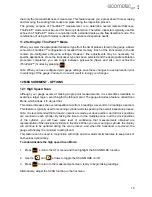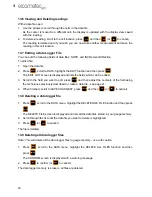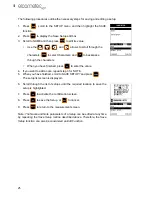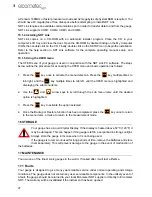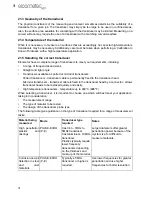
31
en
21.3 Geometry of the transducer
The physical constraints of the measuring environment sometimes determine the suitability of a
transducer for a given job. The transducer may simply be too large to be used in confined areas.
Also, the surface area available for contacting with the transducer may be limited. Measuring on a
curved surface may require the use of a transducer with a matching curved wearface.
21.4 Temperature of the material
When it is necessary to measure on surfaces that are exceedingly hot, special high-temperature
transducers may be necessary. Additionally, care must be taken when performing a ‘Calibration to
Known Thickness’ with a high temperature application.
21.5 Selecting the correct transducer
Elcometer have a complete range of transducers to meet your requirements, including:
•
A range of frequencies and sizes
•
Straight and right angle
•
Transducers available as potted or microdot transducers:
Potted
transducers - transducer cable is permanently fixed to the transducer head.
Microdot
transducers - transducer cable is fixed to the transducer head by a connector - allows
transducer heads to be replaced quickly and easily.
•
High temperature transducers - temperature up to 480°C (896ºF)
When selecting a transducer, it is important to choose one which will best meet your application,
taking into consideration:
•
The measurement range
•
The type of material to be tested
•
The design of the transducer probe type
The following table gives guidance on the type of transducer required for a range of measurement
tasks:
Material being
measured
Mode
Transducer type
required
Notes
High penetration
plastics and
castings
PULSE-ECHO
(P-E)
Cast iron - 1MHz to
5MHz transducer.
Cast aluminium - 10MHz
transducer.
Plastics typically require
lower frequency
transducers depending
on the thickness and
make-up of the material.
Larger diameters offer greater
penetration power because of the
crystal size, for difficult to
measure materials.
Corrosion and pit
detection in steel
and cast
materials
PULSE-ECHO
(P-E)
Typically a 5MHz
transducer or higher is
required.
Use lower frequencies for greater
penetration and use higher
frequencies for better resolution.


